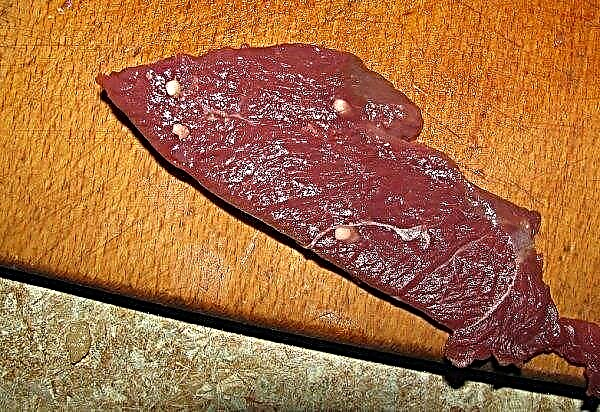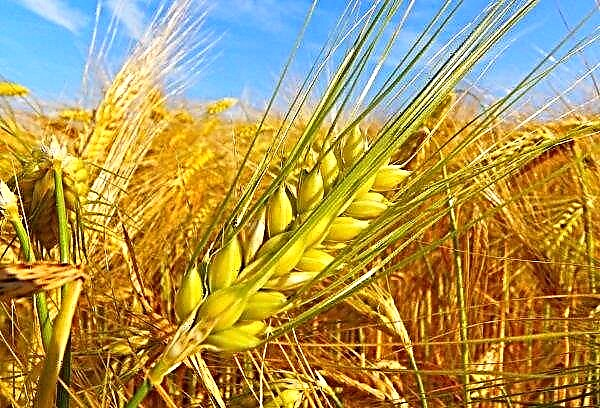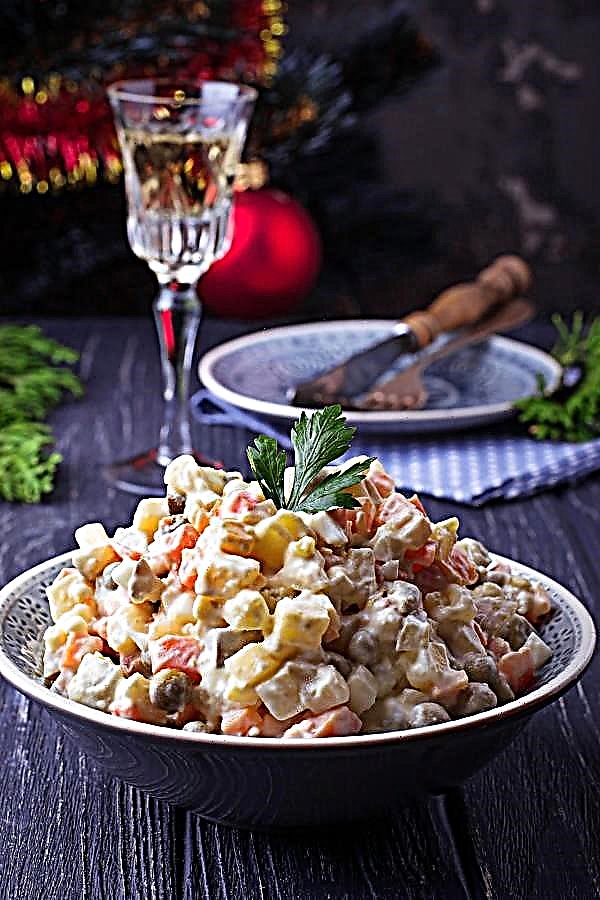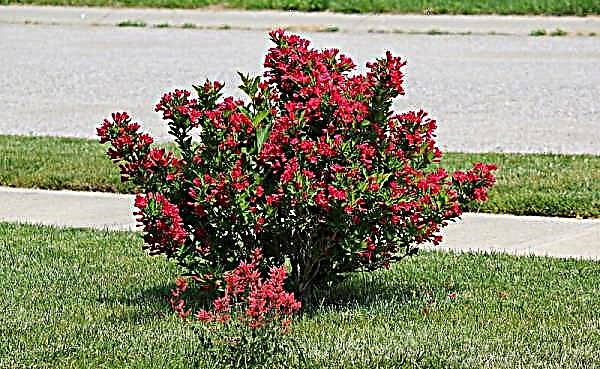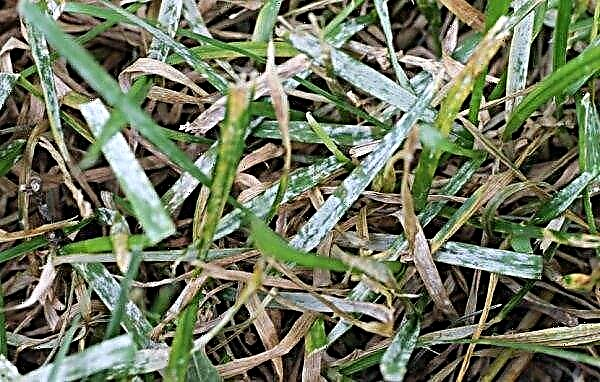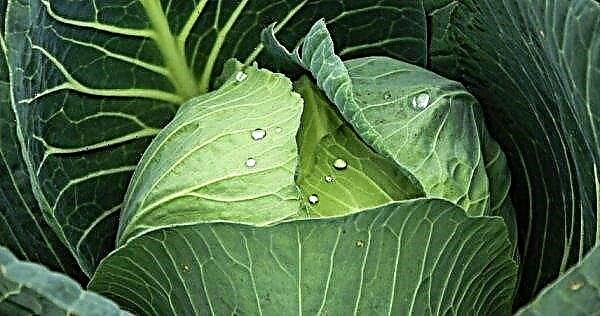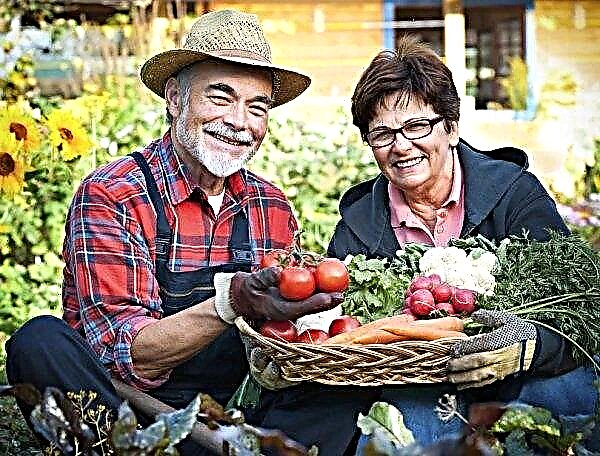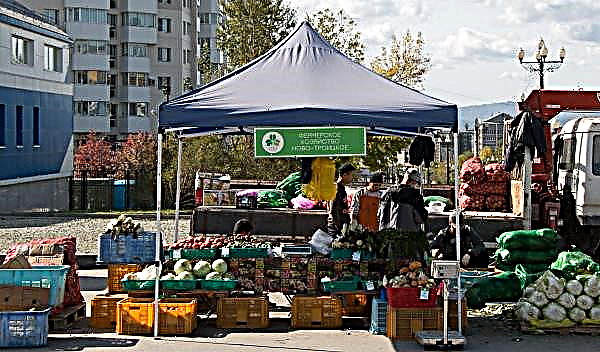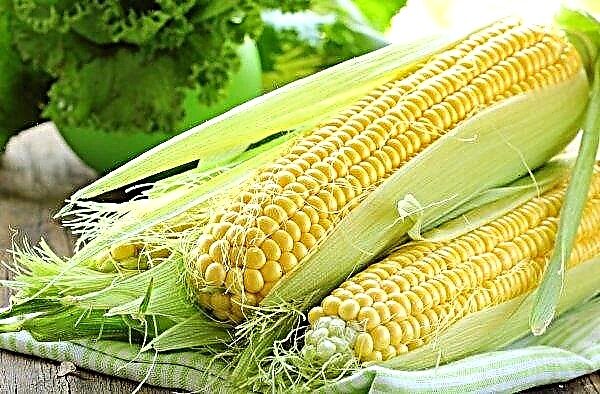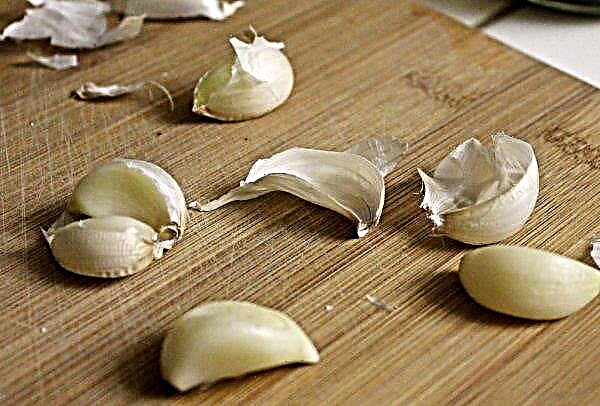Growing onions from sevka is the most common and simple way, but you can get a crop of this popular vegetable in one season. It is important to consider some nuances.
Growing onions from seeds in one season
The onion cultivation method in one year has many advantages and very few disadvantages.
Pros
- Growing onions from seeds makes sense due to these advantages:
- Savings on planting stock. Seeds are cheaper than sevka. They are easier to store and prepare for planting (disinfect, stimulate, harden).
- The ability to receive annual harvests from seeds, which saves time for a full crop.
- Higher yields. With the seedling method, the bulbs have time to mature well and gain weight. At the same time, plants are grown under optimal conditions, which helps them avoid the negative effects of the environment. Already stronger specimens are planted on the bed.
- Lack of shooting at an annual bow. This provides him with a longer shelf life.
- This is sometimes the only way to get a crop of some varieties of onions (mostly sweet), since the seeds of these varieties are poorly stored.
Minuses
- The seed growing method has some disadvantages:
- This method of growing onion crops is more labor intensive than comparing the crop from the seed.
- To grow onions from seeds will require more manipulations aimed at obtaining seedlings and transplanting them.
- In some cases, the seeds can be sown immediately on the beds, but more often it is necessary to engage in their thinning and weed control, which easily clogs tender seedlings.
- A limited number of varieties. Not every kind of onion is suitable for cultivation for one season.
Did you know? To strengthen the immune system, it is recommended to eat 1/2 of the bulb fresh daily. However, this method of maintaining the health of the body is not suitable for diseases of the gastrointestinal tract.
The main criteria for choosing a variety
To choose the right variety of onions for growing from seeds, you need to pay attention to the following:
- Ripening time (early, middle, late). Residents of the northern regions should stop at early and medium grades. Southerners can use any variety in terms of time.
- Recommended growing regions. It is best to opt for zoned varieties.
- Keepiness. Onions are often grown for winter stocks, so the shelf life of the bulbs often plays a decisive role when choosing a variety.
- Low-graded or multi-graded variety. Low-graded varieties are grown to produce bulbs, and many-graded ones are good for greens. There are many-grape onion varieties that are suitable for turnip and feather.
- Dimensions. Some varieties form small bulbs (up to 50 g), the average weight is 120 g, and large grow up to 400 g, or even more.
- Taste (spicy, peninsular, sweet). Peninsular and spicy varieties with universal use are most in demand among the population. Sweet varieties are mostly used for salads, but they also have a lot of fans.
- Productivity. Gardeners prefer to spend their labor on varieties that produce large yields.
- Is the variety a hybrid. From varietal plants, you can get and collect your own seeds. From hybrids, seed material is not worth trying to get - it will not convey the characteristics of the mother plant.

Selection of the best varieties and hybrids of annual onions
Consider the best varieties for growing from seeds:
- Red baron. Variety of medium ripening. It belongs to the peninsular varieties, has a sweetish flavor and excellent taste. Forms red bulbs weighing 50-100 g with excellent keeping quality. High yield - up to 3 kg / 1 m². Recommended for many regions of the Russian Federation.
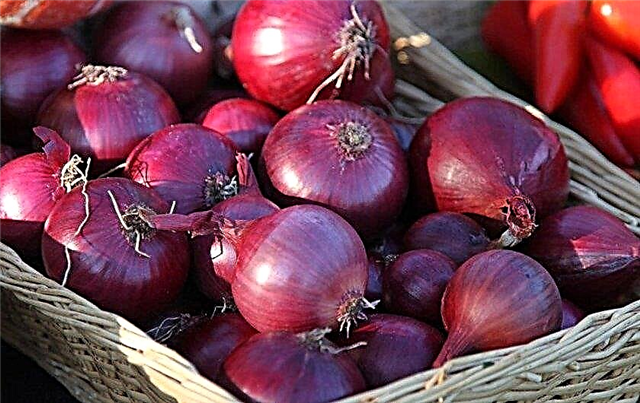
- Excisible. This productive variety, recommended for all regions, has medium-late periods. It can adapt to different climatic conditions. Forms large (up to 800 g) single-bud bulbs of a sweet taste. They are stored only 3-4 months.

- Siberian annual. Cold-resistant early variety of peninsular taste, whose bulbs in an annual culture reach 100 g. It is well stored and does not shoot. This onion can be grown not only on turnips, but also on feathers.

- Shaman. Early ripening onions with excellent spicy taste. It is permissible to grow it in compacted plantings, and from 1 m² you can collect 2.7 kg of slightly elongated red bulbs, weighing about 50-65 g. They are not stored for a long time.

- Centaur. Mid-season cultivar of sweet taste. Forms bulbs weighing up to 300 g with excellent shelf life, yellow husk and white flesh. It is resistant to diseases and weather conditions.

- Delight. Late low-grade variety, resistant to diseases and adverse factors. It forms bulbs weighing 260-330 g with a straw husk and white juicy pulp of an acute taste, which have excellent keeping quality.
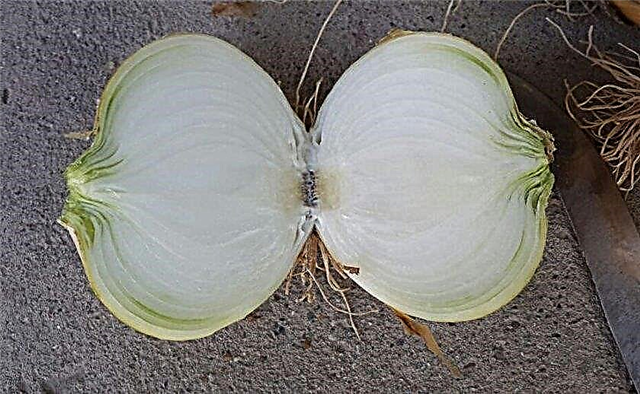
- Agro winter. An early winter-hardy onion with a peninsular taste. It has one-sized bulbs with white scales and pulp, weighing about 80-100 g. It is stored only until January.

- Karatalsky. Early low-yielding cultivar. It forms round bulbs with a golden husk and a semi-sharp taste, weighing about 120 g. It has an average shelf life.

- Olina. An early high-yielding variety with excellent keeping quality and a semi-sharp taste. Bulbs have a yellow husk and a mass of 80 to 130 g. It can adapt to different growing conditions.

- Farmer. Mid-season variety of pungent taste with yellow flakes. Resistant to adverse conditions and diseases. Bulb weight from 150 to 350 g. They are stored until spring.

- Chalcedony. It is popular in the southern regions and can be grown on the feather. It has medium ripening and medium-large bulbs in size. It is characterized by a sharp taste and high productivity - up to 4 kg / m². It is well stored and exhibits resistance to certain diseases.

This is not the whole list of existing varieties and hybrids. Before purchasing seeds, you should familiarize yourself with their characteristics and recommendations for growing.
Did you know? Worldwide, there are approximately 900 types of onions, but only 228 of them are vegetables.
Preparatory Activities
Onions can be grown in a seedling-free way by sowing cold-resistant varieties “before winter” or in early spring. Such methods are good for the southern regions. But even in warm regions, growing onions from seedlings is more effective than sowing, which allows you to get early production. In the northern regions, you need to stop only on the seedling method, which lengthens the growing season.
At home, you need to prepare everything well for growing a crop and create optimal conditions for it.

Seed treatment
Onion seeds (chernushka) sprout slowly, so they should be prepared if they have not yet been processed. They must be decontaminated in a 1% solution of potassium permanganate, having stood in it for 30 minutes. After potassium permanganate, the seed should be well washed and soaked before planting in warm water overnight. If the expiration date is coming to an end, then chernushka should be soaked in a growth stimulator (aloe juice or Epin). After this, the seeds are not washed, but sown immediately.
Important! Onion seeds retain good germination for no more than 2-3 years. It is best to plant seed collected last year.
To test the germination of seeds, a month before sowing, 10–20 pieces are selected and germinated. To do this, they are wrapped in a damp cloth and kept in a warm place until they sprout. Usually this procedure lasts 2 weeks. The fabric is periodically moistened so that it does not dry. If germination is not very high, then the sowing is done compacted.

Site and ground preparation
As a container for onion seedlings, you can use seedling boxes, cassettes, homemade containers. Usually use boxes, as they are easy to carry and save space on the windowsill. It should be borne in mind that onion seedlings do not dive. The easiest way is to buy soil for seedlings in the store.
Did you know? The Crusaders redeemed their captives from the Saracens, giving 8 onions per person.
You can prepare nutrient substrates with your own hands:
- mix equal parts of sod-leaf soil and humus;
- make a mixture of garden soil, humus and ash (1 glass per 10 l).
 Homemade soil mixtures must be calcined in the oven or spilled with boiling water for disinfection
Homemade soil mixtures must be calcined in the oven or spilled with boiling water for disinfection
Sowing seeds for seedlings
Onion seeds are sown in prepared boxes with soil to a depth of about 1 cm. Before that, the soil is moistened and grooves are made 1–1.5 cm deep. In this case, the gap between rows is 5 cm and 1-3 cm between seeds. Seeds are convenient put into grooves with tweezers. After embedding the seed in the soil, it is again moistened with a sprayer. They cover the box with film or glass and put in a dark warm place + 18 ... + 25 ° С.
Video: Proper sowing of onions for seedlings
Seedling Care
As soon as the first shoots appear, the shelter is removed and the container is moved to a lit place, and the temperature is reduced to +10 ... + 16 ° C. After 7 days, the temperature regime is set at +16 ... + 18 ° C. As soon as the seedlings grow, the plants break through so that between the shoots there is a gap of 2-3 cm.
It is necessary to ensure that the soil does not dry out, and moisturize as necessary. Do not allow overflows and drying out of the earth. For irrigation, water is defended to room temperature. At least 2 top dressings need to be carried out to obtain strong planting material.
The introduction of nutrients is carried out with an interval of 14 days. You can use the following composition - 20 g of superphosphate, 5 g of potassium chloride and 10 g of urea are diluted in 10 l of water. Well for feeding, another solution of chicken droppings in a ratio of 1:10 is suitable.

Since onion sowing is carried out in the cold season, when daylight hours are still short, it is necessary to take care of an additional light source. With a lack of light, the plants will stretch and thin. For lighting in the evening use LED lamps. Daylight hours should be at least 12 hours.
14 days before landing on an open area, it is necessary to harden seedlings. For this purpose, seedlings are taken out to a balcony or a loggia, at first by 10-15 minutes, and then the time is increased until the plants remain there all day.
Did you know? Baked onions are good for diabetes. It contains glyconin, which helps lower blood glucose and substances that positively affect insulin production. In addition, after heat treatment, this vegetable irritates the mucous membrane of the digestive tract less.
Planting sprouts on the beds
Planting of seedlings is carried out 52-60 days after sowing seeds, when the formation of three true leaves. Plants are planted in open ground not earlier than April. For this, a well-lit area is chosen. It should be noted that this plant crop grows well on sandy soil.
Land for planting seedlings is prepared in the fall. When digging, compost or humus is introduced into the soil, based on the ratio of 2 buckets per 1 m². It should also add 2 liters of ash and 50 g of complex fertilizers. In the spring, the plot is loosened and leveled with a rake. Then they make grooves in rows, 5 cm deep with a gap of 0.3 m between them. After that, seedling is irrigated and planted.

For planting, only strong seedlings are chosen. The leaves of the plants are pre-cut by 1/3 (this will reduce the evaporation of moisture), and the root system is cut and lowered into a clay mash. The landing process itself is carried out in dry weather, in the evening, after 17-00 or in cloudy weather.
Plants are placed in prepared furrows with an interval of 12-15 cm from each other. If the onion variety provides for obtaining large onion heads, then the distance between them is 20 cm. The seedlings are deepened 1 cm deeper than it grew before. They fill it with soil, tamping it a little. The next day, watering is carried out with the addition of humate - this will help to strengthen the sprouts well.

Further care
Proper care for onion beds should be arranged. It is enough to carry out humidification 1 time in 7 days. On 1 m², beds are poured 7-10 liters. Due to dry weather, watering is carried out more often - 3 times in 7 days. 2-3 weeks before harvesting the onions, watering is stopped. This is required for bulb ripening. If the weather is too dry, you can spend a little moistening the soil (1 time per week).

To feed the planted seedlings, preferably every 14 days. For the first feeding take nitrogen-containing fertilizers. You can use an ash solution or dilute mullein (chicken droppings). The second top dressing is carried out using complex fertilizers. The third time they feed potash-phosphorus fertilizers.
Important! In the second half of the growing season, you should not use nitrogen-containing top dressing due to the fact that they slow down the ripening process of the bulbs.
Weed grass should be removed from the beds, as they pull nutrients from the soil and moisture, which is why bulbs grow small. Weeding is combined with loosening the soil and done after watering.

Harvesting and storage
When the feathers of the onion turn yellow and wilted, proceed to the collection of bulbs. Usually this period falls on the last decade of July or the first half of August. If the ground part of the plant has not acquired yellowness, then the vegetable is dug up and must be placed in the sun so that it finally ripens. After the onion has dried, yellowing feathers are removed, leaving a “tail” 5 cm from the top and roots - 1 cm from the base. Then the bulbs are well dried in the sun or near heating appliances.

The harvest must be sorted out, sorting damaged and rotted specimens, and smaller fruits should be set aside separately for sowing “in the winter”. The onions selected for storage are placed in wooden boxes or bags made of dense fabric. They also hang the bulbs by placing them in nylon stockings or braiding them with braids. Then they are moved to a dark, cool room (basement, underground).
The optimum temperature in room conditions is + 18 ° C. In the cellar, varieties with an acute and semi-sweet taste are stored at 0 ... + 1 ° C, and sharp onions - at -1 ... -3 ° C. Inspect vegetables periodically and remove rotten as well as dry specimens.
Important! Raw, poorly dried onions are not stored for storage - vegetables can rapidly begin to rot.
Growing onions in one period from seeds has many advantages and is well suited for areas with short summers. This can be done by selecting a suitable variety and using the seedling method of cultivation.












